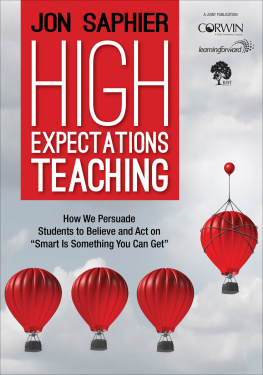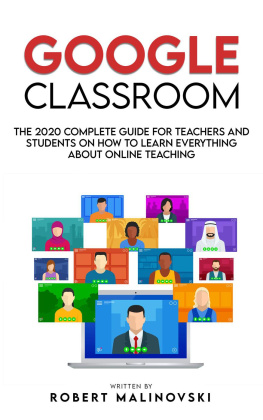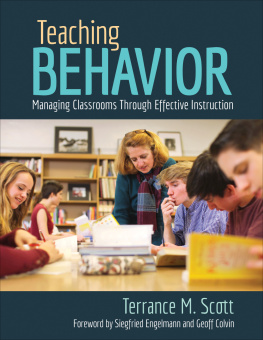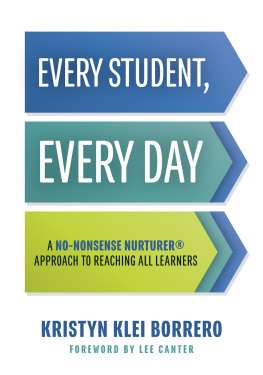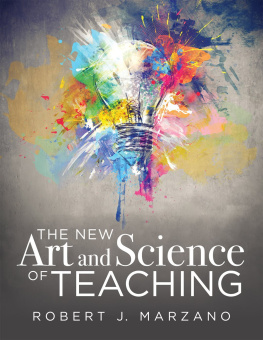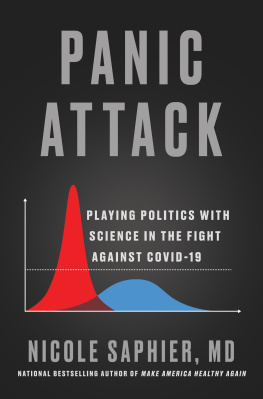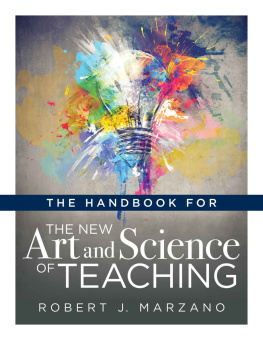High Expectations Teaching
You have to erase eight or nine years of low or no expectations, Mr. Jenkins said. You have to make them un-believe what theyve been taught to believe.
Patricia Leigh Brown
High Expectations Teaching
How We Persuade Students to Believe and Act on Smart Is Something You Can Get
Foreword by

FOR INFORMATION:
Corwin
A SAGE Company
2455 Teller Road
Thousand Oaks, California 91320
(800) 233-9936
www.corwin.com
SAGE Publications Ltd.
1 Olivers Yard
55 City Road
London EC1Y 1SP
United Kingdom
SAGE Publications India Pvt. Ltd.
B 1/I 1 Mohan Cooperative Industrial Area
Mathura Road, New Delhi 110 044
India
SAGE Publications Asia-Pacific Pte. Ltd.
3 Church Street
#10-04 Samsung Hub
Singapore 049483
Copyright 2017 by Corwin
All rights reserved. When forms and sample documents are included, their use is authorized only by educators, local school sites, and/or noncommercial or nonprofit entities that have purchased the book. Except for that usage, no part of this book may be reproduced or utilized in any form or by any means, electronic or mechanical, including photocopying, recording, or by any information storage and retrieval system, without permission in writing from the publisher.
All trademarks depicted within this book, including trademarks appearing as part of a screenshot, figure, or other image, are included solely for the purpose of illustration and are the property of their respective holders. The use of the trademarks in no way indicates any relationship with, or endorsement by, the holders of said trademarks.
Smart Is Something You Can Get. This statement was originated by Jeff Howard and Verna Ford of the Efficacy Institute and has been a foundation of their work for 35 years.
Printed in the United States of America.
ISBN 978-1-5063-5679-2
This book is printed on acid-free paper.
Program Director: Dan Alpert
Senior Associate Editor: Kimberly Greenberg
Editorial Assistant: Katie Crilley
Production Editor: Cassandra Margaret Seibel
Copy Editor: Sarah J. Duffy
Typesetter: C&M Digitals (P) Ltd.
Proofreader: Caryne Brown
Indexer: Terri Morrissey
Cover Designer: Scott Van Atta
Marketing Manager: Charline Maher
List of Resources
QR codes and URLs for the following resources appear throughout the book. To read a QR code, you must have a smartphone or tablet with a camera. We recommend that you download a QR code reader app that is made specifically for your phone or tablet brand.
Chapter 1
Chapter 2
Chapter 3
Chapter 4
Chapter 5
Chapter 6
Foreword
Every summer for the past five years, I have asked Jon Saphier to teach in the Closing the Achievement Gap summer institute that I chair in association with the Harvard Graduate School of Educations Programs in Professional Education. The reason is that no one makes more sense to me when it comes to teaching than Jon Saphier.
I had heard of Jon and his organization Research for Better Teaching before. But I did not appreciate his role in the field until I organized a conference in 2009 on schools that had narrowed gaps while raising overall achievement levels. As I tracked down such schools in Massachusetts and around the nation, I asked the leaders how they knew what to do. In several cases, including then-principal Susan Szachowicz of Brockton High School in Massachusetts and even the whole district of Montgomery County, Maryland, the answer was, Jon told us how. Indeed, in Montgomery County, they created a department in the system specifically for the purpose of teaching his the Skillful Teacher curriculum to the districts educators.
This book, including the videos to which it links by using QR codes, is Jons crowning achievement. In it, he packs wisdom from four decades during which he has stayed abreast of research on teaching, distilled it into practical implications, and worked with educators to embed those implications into their repertoires. Over the years, Jon has witnessed the types of transformation that are possible when the ideas in this book take hold. He believes that most teachers have unrealized potential just as their students do. Hes convinced that the ideas in this book can help them harvest it.
While there are many ways he could have framed the book, Jon chose to focus on the idea that belief in effort based ability, better known these days as growth mindset, can greatly reduce racial and socioeconomic achievement gaps. He is careful to credit Jeff Howard and Carol Dweck. It was JeffJon calls him an unsung herowho first organized a way of thinking and talking about how rumors of inferiority made students of color doubt their ability to learn and then underperform academically. Then and now, Jeffs focus has been on racial disparities and helping children of color achieve to their potential. Carol Dweck has focused on mindsets more generally, producing evidence that a fixed mindset undermines persistence and fosters a performance orientation, whereas believing that intelligence is malleablehaving a growth mindsetpromotes persistence and supports a mastery orientation.
The early work that Jon cites has spawned a rapidly expanding field in which researchersmany of them Carols students and their studentsare documenting ever more ways that mindsets and beliefs can affect performance. There are research networks spanning numerous universities and think tanks. Among the more prominent are the Carnegie Foundations Networked Improvement Communities and the Mindset Scholars Network, which brings together both junior and senior scholars from 14 universities in the United States. There is much in this book that scholars in these networks and others could focus on in efforts to disseminate and evaluate effective approaches to teaching.
If you are a teacher, this book provides ideas and examples for things you can do if you truly believe in effort-based ability and even if you dont. Twenty-five years ago, I studied the implementation in Oklahoma of an approach to teaching that many teachers resisted when their schools introduced it. The approach had been distilled from the work of Marva Collins, a master teacher in Chicago about whom a movie was made with Cicely Tyson in the starring role. Collinss approach had much in common with ideas this book. I was surprised to find that even among teachers who successfully implemented the approachteachers who experienced big improvements in student engagement and even standardized test scoresbelief was the product of success more than the cause of it. The cause of success was action. Action to implement the approach produced results even before the teachers believed it would make any difference. This is not an uncommon sequence. Effective leaders in such instances are pivotal in providing the reminders, monitoring, supports, and nudges that lead to action before belief.

